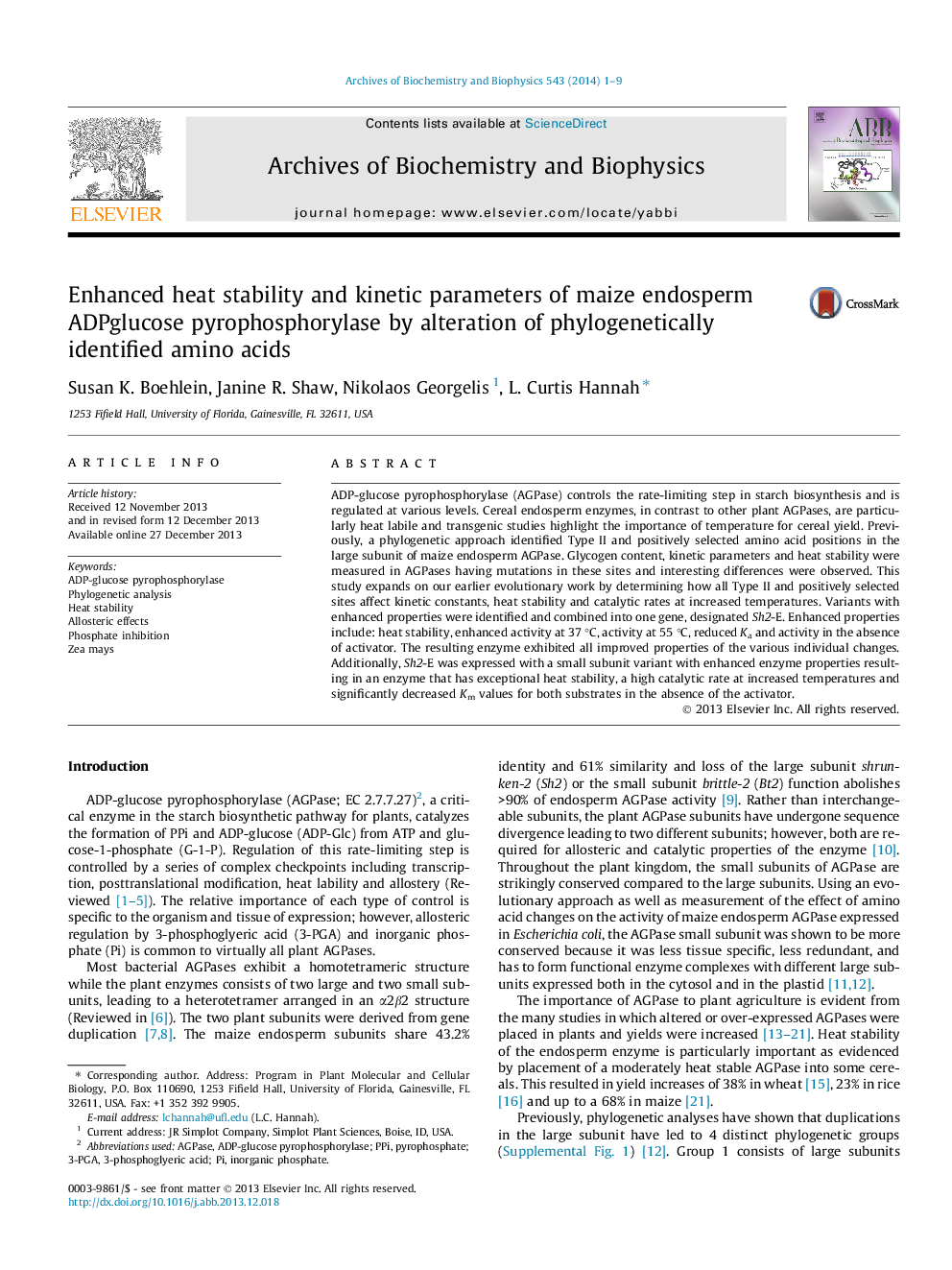| Article ID | Journal | Published Year | Pages | File Type |
|---|---|---|---|---|
| 8290310 | Archives of Biochemistry and Biophysics | 2014 | 9 Pages |
Abstract
ADP-glucose pyrophosphorylase (AGPase) controls the rate-limiting step in starch biosynthesis and is regulated at various levels. Cereal endosperm enzymes, in contrast to other plant AGPases, are particularly heat labile and transgenic studies highlight the importance of temperature for cereal yield. Previously, a phylogenetic approach identified Type II and positively selected amino acid positions in the large subunit of maize endosperm AGPase. Glycogen content, kinetic parameters and heat stability were measured in AGPases having mutations in these sites and interesting differences were observed. This study expands on our earlier evolutionary work by determining how all Type II and positively selected sites affect kinetic constants, heat stability and catalytic rates at increased temperatures. Variants with enhanced properties were identified and combined into one gene, designated Sh2-E. Enhanced properties include: heat stability, enhanced activity at 37 °C, activity at 55 °C, reduced Ka and activity in the absence of activator. The resulting enzyme exhibited all improved properties of the various individual changes. Additionally, Sh2-E was expressed with a small subunit variant with enhanced enzyme properties resulting in an enzyme that has exceptional heat stability, a high catalytic rate at increased temperatures and significantly decreased Km values for both substrates in the absence of the activator.
Keywords
Related Topics
Life Sciences
Biochemistry, Genetics and Molecular Biology
Biochemistry
Authors
Susan K. Boehlein, Janine R. Shaw, Nikolaos Georgelis, L. Curtis Hannah,
